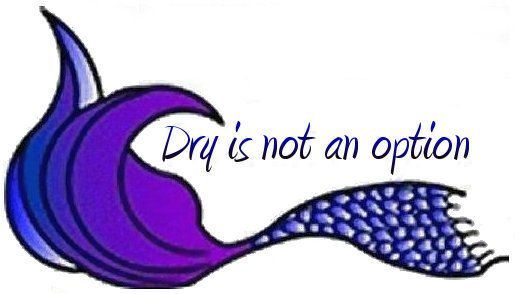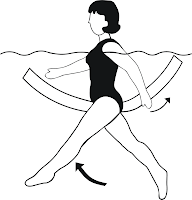Okay, we have Why (II started this blog) and Who (I am) covered. In order to have all our bases covered, I want to talk about the How (do you get started). The following is reprinted from my book and covers a lot.
How To Get Started Working Out in the Water
Once you have decided to take the plunge and want to try working out in the water there are several steps you should take before you get started.
First Things First
First, ladies, go get a well fitting one-piece bathing suit that has good breast support and will stay properly fitted while you exercise.
Where to Go Next
If you choose to join a class, water workouts can be easily found in most communities. Classes can be found anywhere there is water, an instructor and people willing to participate. They are held in fitness centers, YMCA's, local hotels, natatoriums, school pools, rehab centers, parks and recreation centers. An indoor pool is probably the most flexible because it offers year around accessibility.
Next, go check out the facility. Decide what important features matter most to you. Also, you need to determine if you want to join a club. Can you just pay a monthly fee and attend classes without joining? Sometimes classes are offered free with membership, others are open to the public for a nominal charge. Ask!
Really Want a 6 am Class with a Drill Sargent?
Once you have found a pool close to home you need to find out their schedule.. Choose those that fall within the time frame you have available and take a couple of sample classes. When searching for a group, you should look for a class where the instructor's energy level and format matches you own desires and goals. If the instructor is a demanding high-speed machine and you need modifications because of physical limitations, you would be advised to seek another class. You can find various types of classes ranging from arthritis to high intensity and step classes.
Dip Your Toe in the Water
Lastly, ask about the normal range of temperatures of the water. If you are looking for arthritis classes, keep in mind that in order for a site to be rated for Arthritis Foundation classes and physical therapy the water is warmer and the air temperature must be maintained to be within several degrees of the water temperature. Some classes are held in pools that are cooler and those may be used primarily for competition swimming. Most pools will be somewhere in between.
Time To Go!
Okay - You have your bathing suit, you have picked a facility, and you paid your fees. Now get out the door and go to the pool! Even if you don't feel very chipper you will be surprised at how much better you feel after class. Honest!
Do your homework and with just a little legwork you can find a water fitness program that is just right for you and that is geared to help you accomplish your fitness goals.
N
Dry Is Not An Option Water Fitness to Go! Illustrated exercises you can use today
Book by Norma J. Stamp Available online at:
| 







